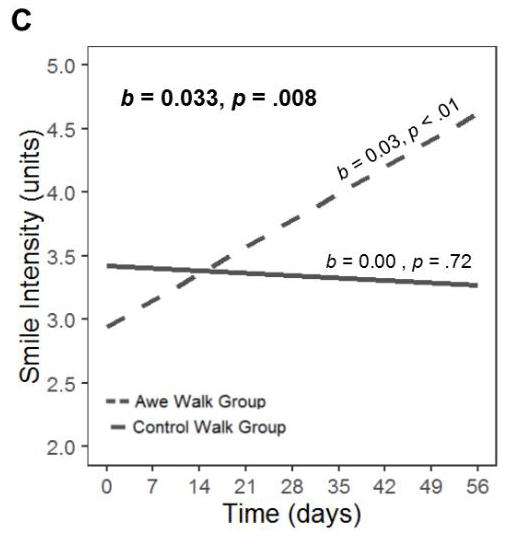Finding Happiness Through "Awe Walks"
/Getting outside is good. Getting outside of yourself is better.
Here in Connecticut a sweltering summer has given way to a surprisingly brisk fall, and, with COVID-19 still keeping many indoor recreation spots shuttered, outdoor activities remain the go-to for those of us with cabin fever.
If you’re like me, you enjoy a nice walk, and a new study appearing in the journal Emotion suggests there’s a better way to do it. No, it has nothing to do with shoes or posture. It’s about attitude.
Senior Author Virginia Sturm, PhD
We need to walk for awe.
Awe is a positive emotion that people feel when they are in the presence of something bigger than themselves that they can not immediately understand. Awe can be inspired by nature, art, music, collective action, even the courage of others. And yes, you can walk for Awe.
Researchers from UCSF led by Dr. Virginia Sturm wanted to investigate whether “Awe Walks” would lead to emotional benefits.
Here’s how it worked.
52 older adults were recruited and randomized into a control walk group or an awe-walk group.
Both groups were instructed to take a 15-minute walk at least once a week for two months. Both groups were told to walk alone, maintain a light pace, and minimize usage of phones or other media. They were also instructed to take selfies before, during, and after each walk. More on that in a bit.
The “Awe Walk” group was also asked to cultivate their sense of awe during the walk. They were told to tap into their childlike sense of wonder, to note the vastness of things (whether trees or skyscrapers), to notice the intricate details of things (like leaves or historic monuments) and to seek out novel places to walk. The goal here was externalization, to place the focus outside of themselves.
And… people walked.
After each walk, the participants took a survey about their emotions. They took similar surveys every day, even if they didn’t walk.
And, it turned out, that people in the Awe group were more, well, awe-struck.
But that’s not all. People in the Awe Walk group had an increase in prosocial emotions over time and a decrease in feelings of distress.
But the cool part, honestly, was in the selfies. It turns out, you can tell a lot from a selfie.
Here’s me on a walk this weekend.
The researchers measured how much “self” was in each picture like this by outlining the subject and cropping them out.
In turned out that, over the two months, the size of self in the Awe Group got smaller and smaller. Their selfies were less selfie and more, well, the rest-y.
They also looked at how intense the selfies smile was, on a 5-point scale. This was done by blinded smile-scorers and yes there are people trained to do this. Awe walks led to bigger smiles.
Look, I know it’s a pretty small study and the effects are subjective. But when we think about an intervention we evaluate the risks and the benefits, and whatever the benefits are the risks of taking a moment and appreciating the outside world a little bit more when you’re going on a walk are probably pretty minimal. Just be careful. Don’t bump into anything.
So take a walk, take off your headphones, and tap into that childlike sense of wonder that we left behind way back in… I don’t know… 2019 I guess. It’ll make you smile a bit bigger and that’s awesome.
A version of this commentary first appeared on medscape.com.





